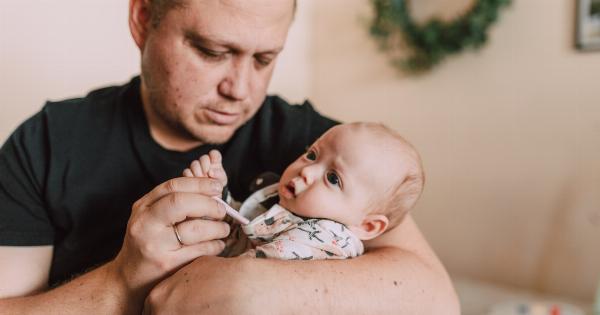As parents, we always want the best for our little ones. From the right nutrition to the right amount of sleep, every detail is important for their growth and development.
But when it comes to the temperature of the nursery, many parents are not sure what the appropriate temperature should be. In this article, we will explore the ideal temperature for a baby’s nursery.
The Ideal Temperature
The ideal temperature for a baby’s nursery is between 68-72°F (20-22°C). This temperature range is comfortable and safe for newborns, infants, and toddlers.
However, it’s important to note that every baby is different and may have different preferences when it comes to room temperature. Some babies may feel more comfortable in a room that is slightly warmer or cooler than the ideal temperature range.
Why is the Right Temperature Important for Your Baby’s Nursery?
Keeping the right temperature in your baby’s nursery is important for several reasons:.
- Comfort: Ensuring the right temperature keeps your baby comfortable and helps them sleep better. Babies who are too hot or too cold are more likely to wake up frequently during the night.
- Safety: A room that is too hot can cause overheating, which can lead to Sudden Infant Death Syndrome (SIDS) or other health issues. On the other hand, a room that is too cold can cause hypothermia, which can also be dangerous for babies.
- Development: Babies who are too hot or too cold may have difficulty focusing on activities, playing, or learning. Keeping the right temperature helps your baby stay alert and interested in their surroundings.
Factors that Affect Nursery Temperature
Several factors can affect the temperature in your baby’s nursery:.
- Weather: External weather conditions, especially extreme heat or cold, can affect the temperature in the nursery.
- Location: Where your baby’s nursery is located in your house can also affect the temperature. For example, a nursery located on the top floor of the house may be warmer than a nursery located on the ground floor.
- Heat Sources: Any heat sources in or near the nursery can affect the temperature. This includes radiators, heaters, or even sunlight coming in through the windows.
- Humidity: Humidity levels can also affect how hot or cold a room feels. If the nursery is too humid, it may feel hotter than it actually is.
How to Check the Temperature in Your Baby’s Nursery
It’s important to regularly check the temperature in your baby’s nursery to ensure that it stays within the safe range. Here are some ways to check the temperature:.
- Thermometer: A thermometer is a simple and accurate way to check the temperature in the nursery. You can purchase a digital thermometer or a traditional mercury thermometer. Just make sure to keep the thermometer away from any heat sources.
- Smart Thermometer: Smart thermometers can connect to your smartphone or tablet and allow you to remotely monitor the temperature in the nursery.
- Temperature Monitors: Temperature monitors are small devices that can be placed in the nursery to continuously monitor the temperature. They often come with an alarm that alerts you if the temperature goes above or below a certain range.
Tips for Maintaining the Right Temperature in Your Baby’s Nursery
Here are some tips for maintaining the right temperature in your baby’s nursery:.
- Use a Room Thermometer: A room thermometer can help you accurately monitor the temperature and make adjustments if necessary.
- Dress Your Baby Appropriately: Dress your baby appropriately for the temperature in the nursery. Use a light sleeper and a light blanket for warmer temperatures, and a heavier blanket for cooler temperatures.
- Keep the Nursery Ventilated: Adequate ventilation helps to regulate the temperature and humidity in the nursery. Make sure to keep the windows open or use a fan to circulate air.
- Avoid Overheating: Avoid using heavy blankets, thick sleepwear, or warm hats that can cause your baby to overheat. If the nursery is too warm, use a fan or air conditioner to cool it down.
- Keep Heat Sources Away from the Crib: Keep any heat sources, such as radiators or heaters, at a safe distance from the crib to avoid overheating.
Conclusion
The temperature of your baby’s nursery is an important factor in ensuring their comfort, safety, and development. Keeping the room within the safe temperature range of 68-72°F (20-22°C) is important.
However, it’s important to keep in mind that every baby is different and may have different temperature preferences. Regularly monitoring the temperature and using appropriate clothing and bedding can help ensure that your baby stays comfortable and safe.































